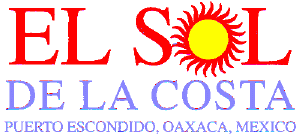

![[lupe]](images/Guadalupe.jpeg) It is probably not mere coincidence that these visitations occurred on
the hill of Tepeyac, site of one of the most important prehispanic
religious centers in central México.
It is probably not mere coincidence that these visitations occurred on
the hill of Tepeyac, site of one of the most important prehispanic
religious centers in central México.
The temple on the hill at Tepeyac (today the actual site of the Basilica of Guadalupe where the image is housed) was dedicated to the worship of Tonantzin, "Our Mother". The religious authorities tried in vain to eradicate this tenacious cult, and perhaps decided instead to Christianize it in the form of Guadalupe.
The image of the Virgin of Guadalupe is one of the great mysteries of the world. This rough handmade garment has lasted over 460 years. The normal lifespan for the fabric, made from agave, would be from 10-20 years.
In their non-literate colonial society, the Indians read the symbolism of the image. They saw that this woman was greater than the moon she stood on, but that she was lesser than and coming from the Sun god. Her blue green outer cloak told them that she was his ambassador.
The stars on her cloak formed the constellations as they appeared in the sky on December 12, 1531. At her waist was a black sash, as was worn by pregnant women at that time. Most important of all, unlike the paintings and the statues in the churches, this messenger from God had skin the color of their own, a coppery brown.
The Indians embraced Guadalupe as the protector of the Indian and Mestizo masses under the harsh conditions of colonial rule. Over the centuries she became an important symbol of Mexican national unity. It was the banner of La Guadalupana that Father Miguel Hidalgo chose to rally support for his struggle for independence from Spain in 1810. Her role as protector of the indigenous peoples of the continent is one that is still recognized today and symbolized by the delightful procession of children that takes place every year on December 12.
Dressed in beautiful native costumes, the little girls bedecked in
ribbons and flowers, the boys in white campesino dress, sombreros and
carbon-daubed mustaches, the procession passes along Avenida Oaxaca from
the Parque El Idilio square at about 5 p.m. to the church for a special
mass blessing the children.